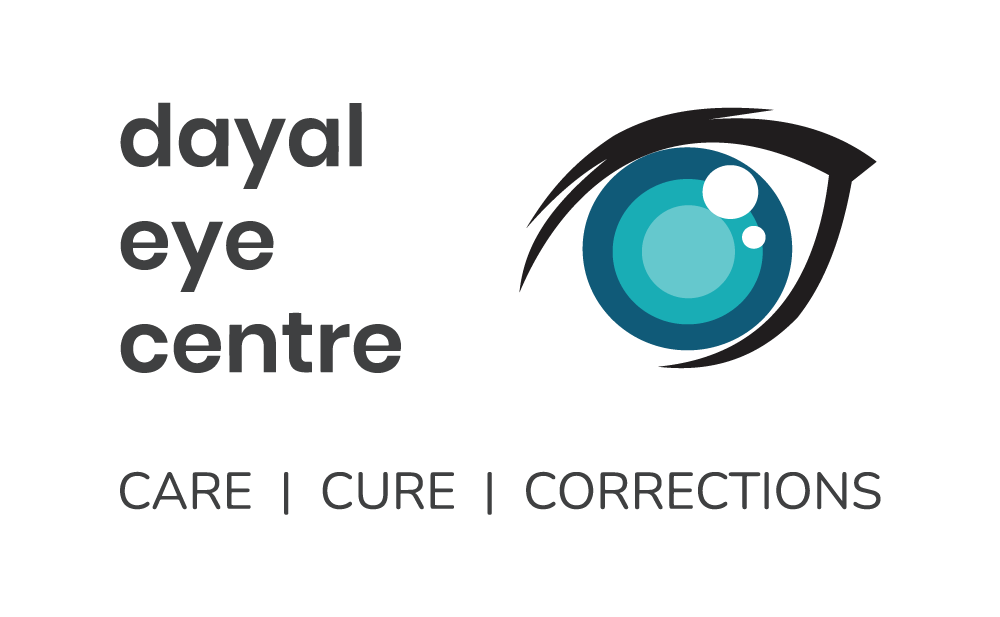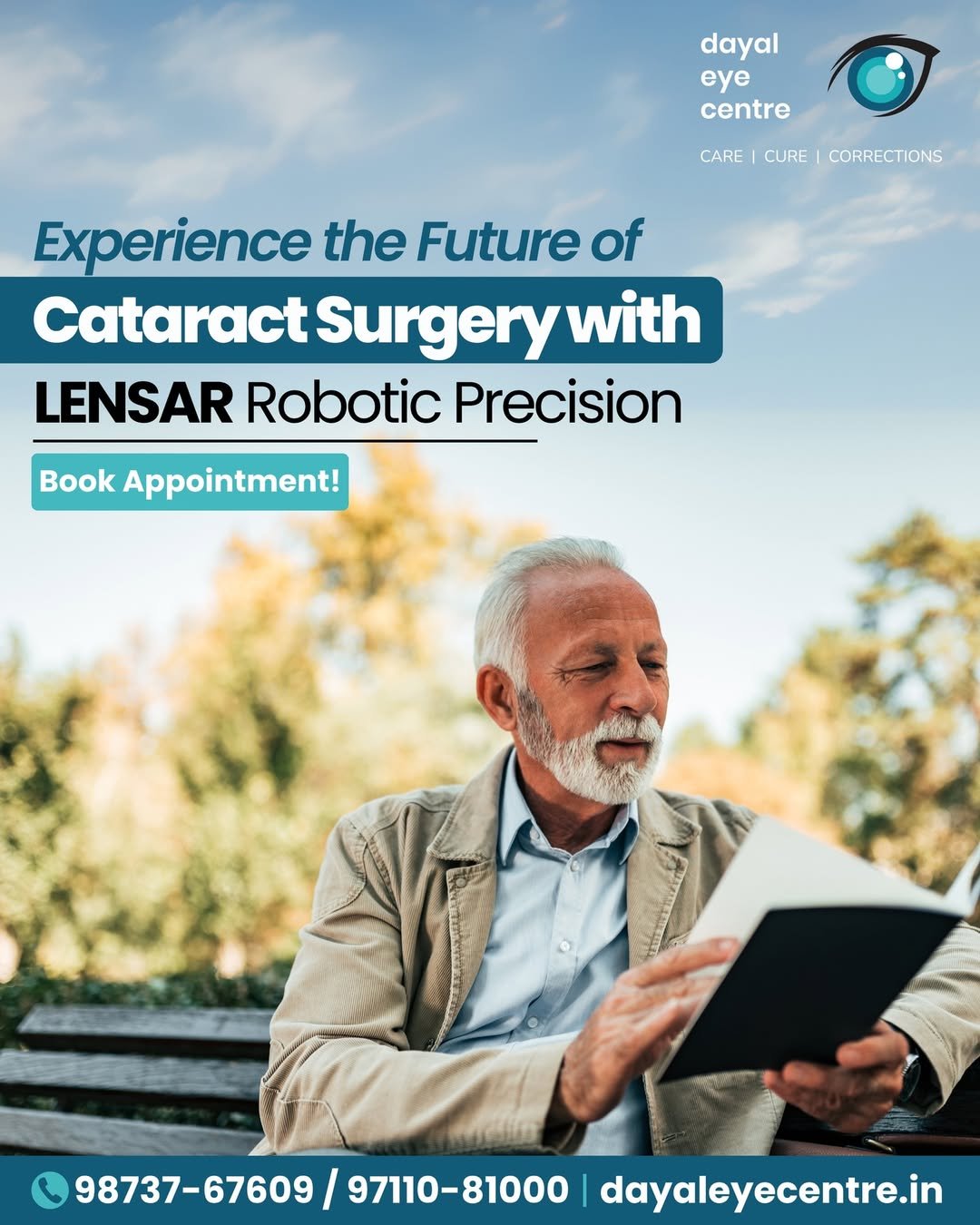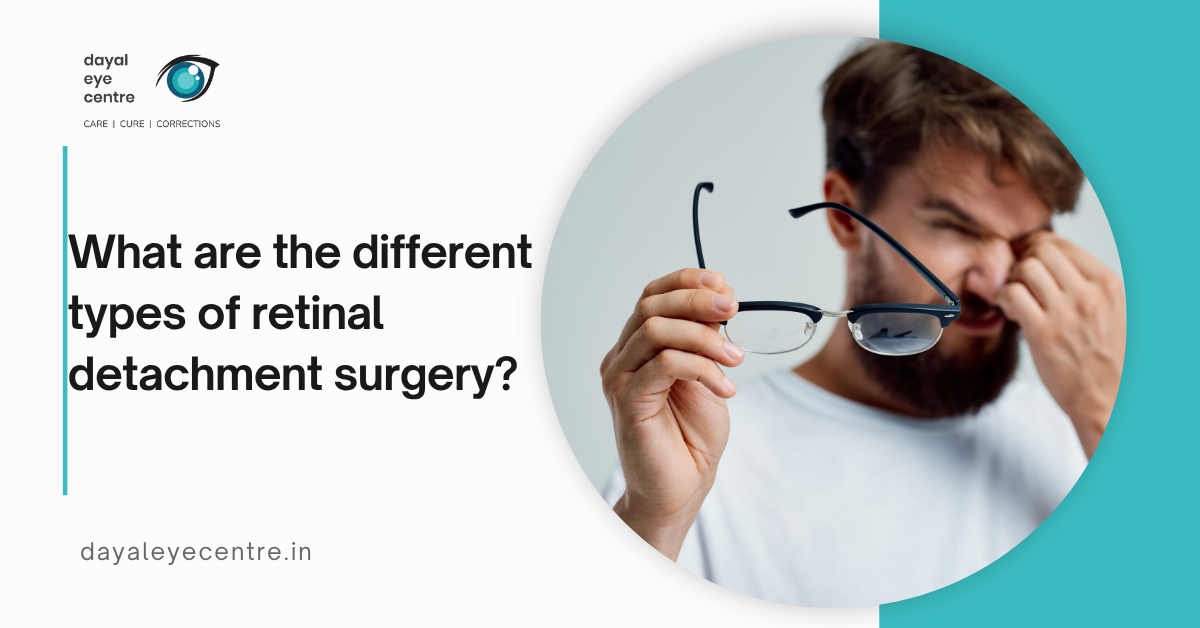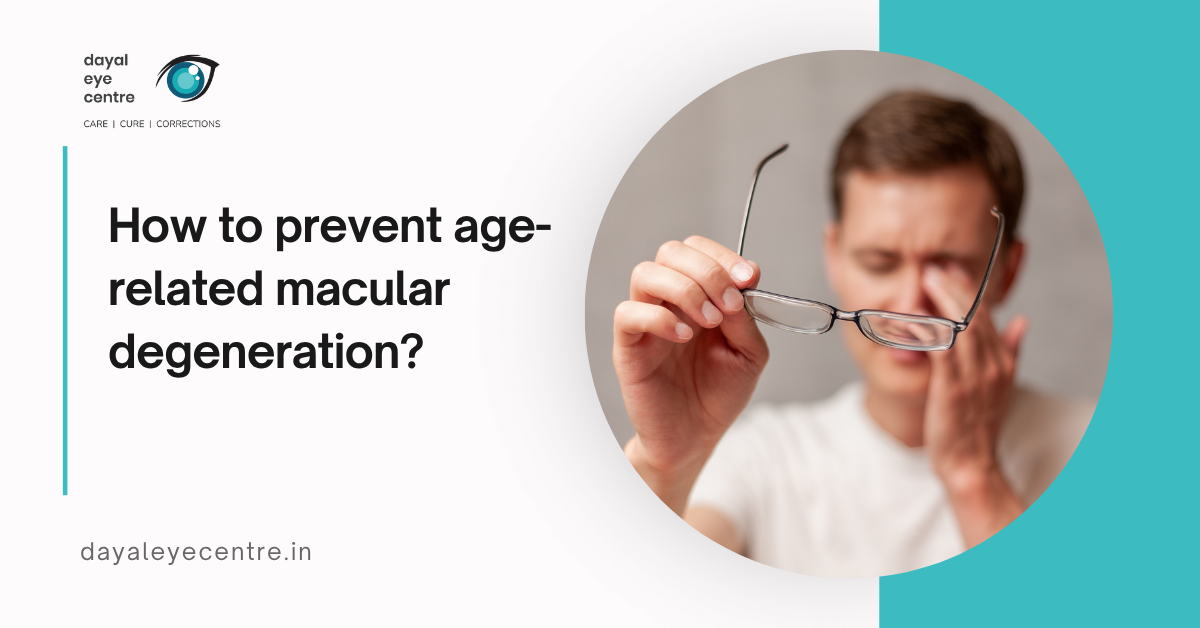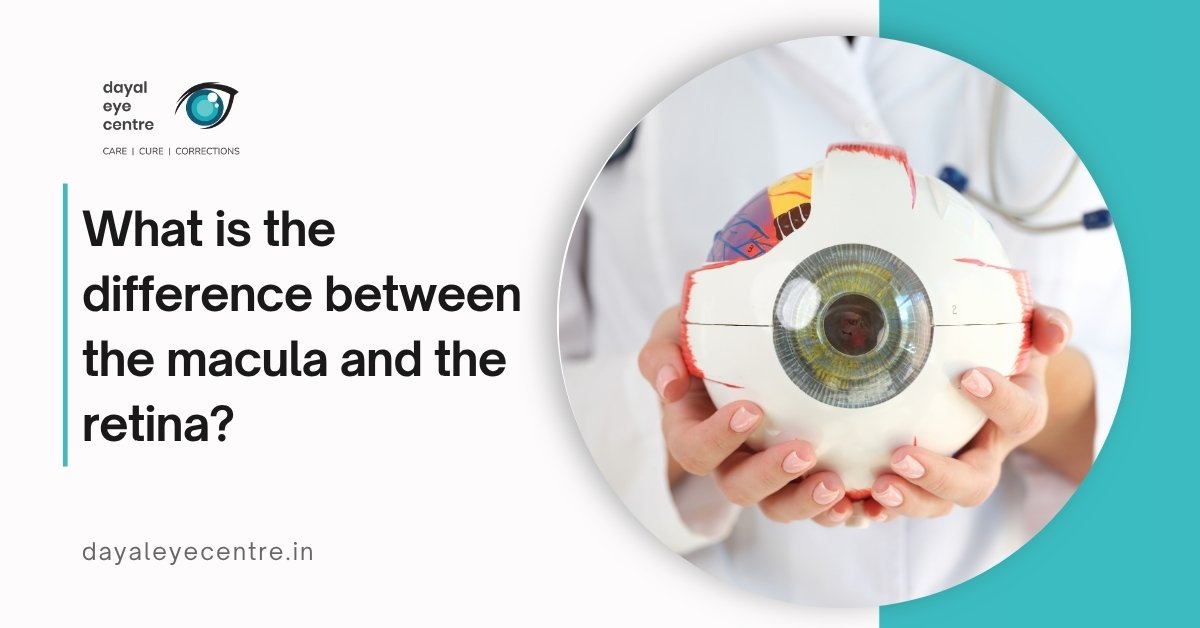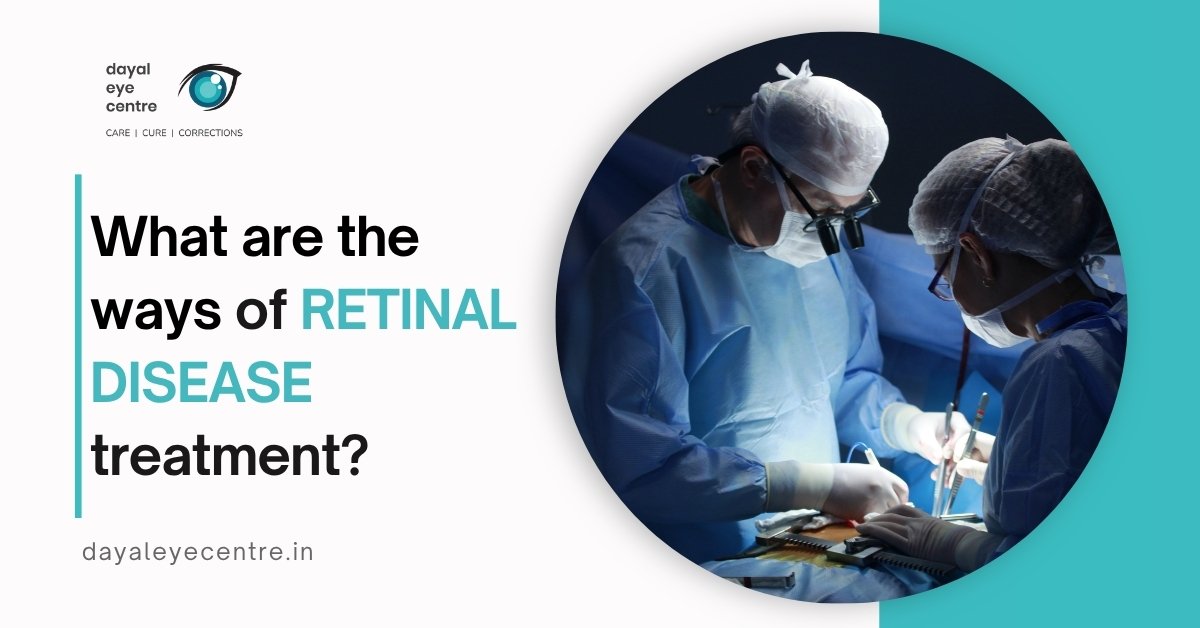A retinal vein occlusion disrupts your eye’s delicate circulatory system. Blood flow interruption in these vital vision structures makes it essential to understand how this condition works. Both patients and clinicians need this knowledge to manage the condition effectively.
How blood flow is disrupted in the retina
Your retina has a network of arteries that supply oxygen-rich blood and veins that carry blood away. Retinal vein occlusion (RVO) happens when a vein gets partially or completely blocked. This blockage usually stems from a thrombus (blood clot) formation. The condition develops through Virchow’s triad of thrombogenesis: venous stasis, degenerative changes in vessel walls, and blood hypercoagulability.
Arterial stiffness plays a decisive role in many cases. Atherosclerosis makes arteries harder, and they compress nearby veins. This compression happens especially at arteriovenous crossings where both vessels share a common connective tissue sheath. Blood flow becomes turbulent and promotes clot formation. The blocked vessels cause pressure to build in the capillaries. This leads to blood and fluid leaking into surrounding retinal tissue.
BRVOs (branch retinal vein occlusions) typically develop at these arteriovenous intersections. CRVO (central retinal vein occlusion) usually occurs at the lamina cribrosa where the central retinal vein leaves the eye.
Macular edema and neovascular complications
Blocked blood flow creates localized hypoxia (oxygen deprivation). This triggers vascular endothelial growth factor (VEGF) release. This protein causes two main complications:
VEGF first increases vascular permeability that leads to macular edema. This condition occurs when fluid builds up in the macula – the central retina portion responsible for sharp, central vision. Vision loss in RVO patients mainly happens because of this swelling.
The persistent lack of oxygen also stimulates abnormal new blood vessel growth (neovascularization). These new vessels are fragile and prone to leaking. They can cause several problems depending on their location:
- Vitreous hemorrhage (bleeding into the eye’s gel-like interior)
- Retinal detachment
- Neovascular glaucoma (when formed in the iris or drainage angle)
Research shows that 52% of ischemic CRVO patients develop iris neovascularization. About 34% develop neovascular glaucoma within 9 months. Early treatment becomes vital, even in non-ischemic cases.
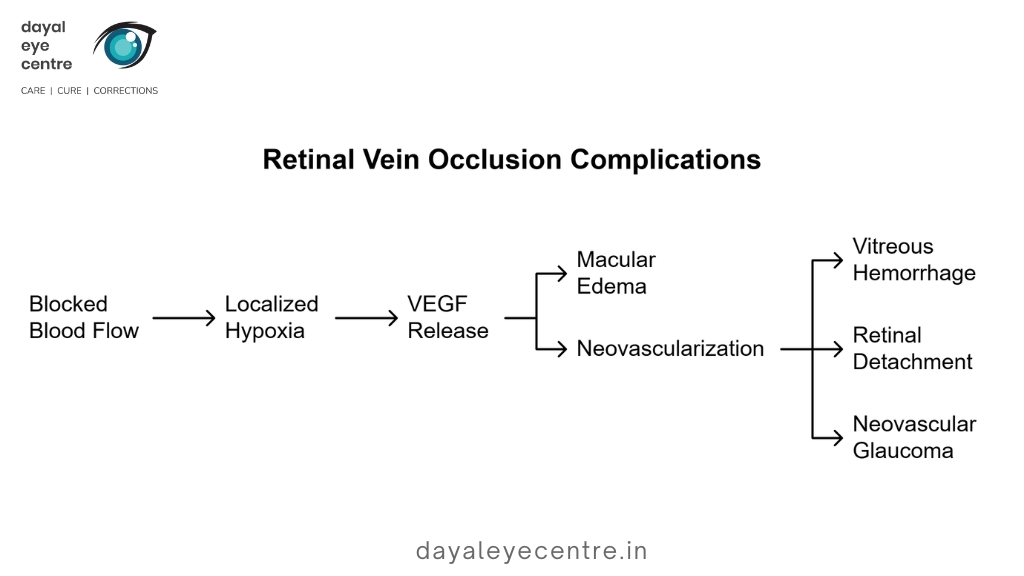
Differences between CRVO and BRVO
The blockage location determines whether you have CRVO or BRVO. Each type has unique mechanisms, severity levels, and outcomes.
CRVO affects the central retinal vein at or behind the lamina cribrosa. This causes hemorrhages throughout all four retinal quadrants. Patients usually experience worse vision loss with CRVO than BRVO. Doctors classify CRVO into ischemic (nonperfused) and non-ischemic (perfused) types. The ischemic form makes up about 30% of cases with poorer outcomes. About 80% of these patients maintain visual acuity worse than 20/200.
BRVO only affects one branch of the retinal venous system. Most cases occur in the superotemporal quadrant (58-66%). Patients generally have better outcomes with BRVO than CRVO. Studies reveal that 40% of untreated BRVO eyes showed improvement after 3 years. About 80% of BRVO cases showed better or stable vision over time.
The risk of complications varies substantially between types. Non-ischemic CRVO can turn ischemic – 15% within the first 4 months and 34% after 3 years. Ischemic CRVO patients face a higher risk of neovascular glaucoma. Medical professionals often call this “90-day glaucoma” because it develops rapidly.
Recognizing the Symptoms of RVO
Early detection of retinal vein occlusion (RVO) can affect treatment outcomes by a lot. Symptoms vary among patients, so knowing what to look for is vital for anyone at risk.
Sudden or gradual vision loss
Vision loss stands out as the main symptom of retinal vein occlusion. It can appear right away or develop over time. This vision change is usually painless and affects only one eye.
Patients with central retinal vein occlusion (CRVO) often experience sudden vision loss that can affect their whole field of vision. Some patients notice a dense central scotoma (blind spot) that develops quickly, while others see subtle, occasional episodes of blurred vision. The type of CRVO – ischemic or non-ischemic – determines how severe these symptoms are, with ischemic cases usually causing more acute symptoms.
Branch retinal vein occlusion (BRVO) typically shows up as partial vision loss in areas where the blocked vessel supplies blood. Many BRVO cases show no symptoms, especially if the blocked area isn’t near the eye’s center. Eye doctors often find these cases during routine checkups.
Vision changes can range from mild blurring to major vision loss. While RVO alone rarely causes complete blindness, vision quality seldom returns to normal, even with treatment.
Presence of floaters and visual field gaps
RVO causes several visual disturbances that patients should watch for:
- Floaters: These look like dark spots, lines, or squiggly shapes in your vision. RVO-related floaters might indicate a vitreous hemorrhage from neovascularization (abnormal blood vessel growth).
- Visual field defects: Patients might notice relative scotomas (areas of partial vision loss) or blind spots in specific parts of their visual field.
- Distorted vision: Things may look warped or wavy, particularly if macular edema develops.
- Peripheral vision loss: Side vision might deteriorate, especially in severe cases.
These symptoms occur as fluid and blood leak into the retina because pressure builds up behind the blockage. The macula—which handles detailed central vision—often swells with extra fluid and causes blurring.
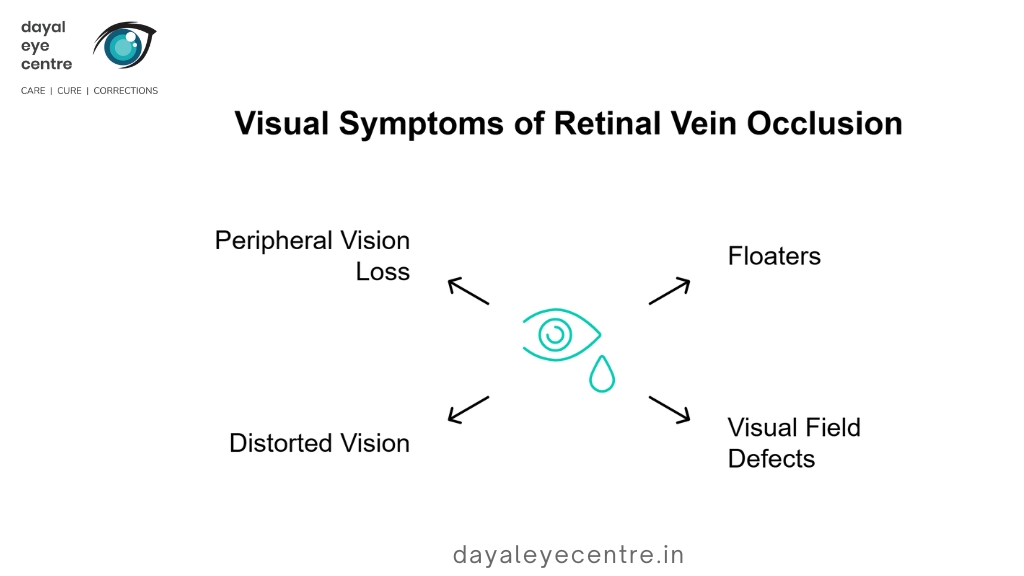
When to seek emergency care
Quick action can save your vision. You should get emergency care if you notice:
- Sudden vision loss in one eye – This needs urgent review. Though some sources say sudden vision loss isn’t typical of RVO, several reliable sources confirm it can happen, especially with CRVO.
- Major vision decrease over hours or days – Quick vision loss needs immediate attention.
- New floaters with vision changes – This is especially true if you also notice visual field defects.
Subtle blurring or minor visual changes can wait a few days until you see an ophthalmologist. Yet all vision changes need review since early treatment reduces permanent vision loss risk.
Eye pressure or pain might appear in severe CRVO cases that develop neovascular glaucoma. Any eye pain with vision changes needs immediate medical attention.
It’s worth mentioning that non-ischemic CRVO can become the more dangerous ischemic form over time. This makes proper evaluation of all visual symptoms important, whatever their original severity.
What Causes Retinal Vein Occlusion to Develop
Learning about the mechanisms of retinal vein occlusion helps doctors spot high-risk patients and create prevention plans. Many factors work together to create conditions that lead to venous blockage.
Role of high blood pressure and cholesterol
High blood pressure is the biggest risk factor for retinal vein occlusion. Blood vessels become stiff and narrow from atherosclerosis when blood pressure stays high. These hardened arteries squeeze nearby veins, especially at points where arteries and veins cross and share tissue. The squeezed veins create turbulent blood flow that damages the inner vessel lining and leads to clots.
Research proves this connection clearly. A study shows high blood pressure increases RVO risk by a lot, with hazard ratios of 1.10 for elevated blood pressure, 1.07 for stage 1 hypertension, and 1.32 for stage 2 hypertension. Blood pressure control reduces RVO risk by 27% in stage 2 hypertension patients.
High cholesterol levels also play a big role in RVO development. Studies reveal higher rates of hyperlipidemia in both central (p<0.001) and branch retinal vein occlusion patients (p<0.001). Low HDL cholesterol associates with higher RVO risk (hazard ratio 1.12).
Impact of diabetes and glaucoma
Diabetes sets the stage for RVO through several pathways. High blood glucose leads to problems in tiny blood vessels, making arterioles rigid and retinal vessels narrow. On top of that, it speeds up arteriosclerosis in diabetic patients, which raises the risk of thromboembolism—the main cause of RVO.
Glaucoma and RVO share a complex connection. High eye pressure can shift the lamina cribrosa, which changes the central retinal vein’s shape and creates more blood flow turbulence. People with diabetes face double the risk of developing glaucoma compared to others. Glaucoma shows up twice as often with hemi-retinal vein occlusion (HRVO) than with CRVO, and four times more than with BRVO.
Blood clotting disorders and rare causes
Blood clotting issues matter more in younger RVO patients, while heart problems are common in older ones. RVO patients under 45 show activated protein C resistance (p=0.014), antiphospholipid antibodies (p=0.022), and anticoagulant protein deficiencies (p=0.05) as key risk factors.
Some rare conditions can also cause RVO:
- Hyperhomocysteinemia
- Inflammatory conditions like vasculitis
- Orbital myositis and other orbital inflammatory diseases
- Blood disorders including polycythemia vera
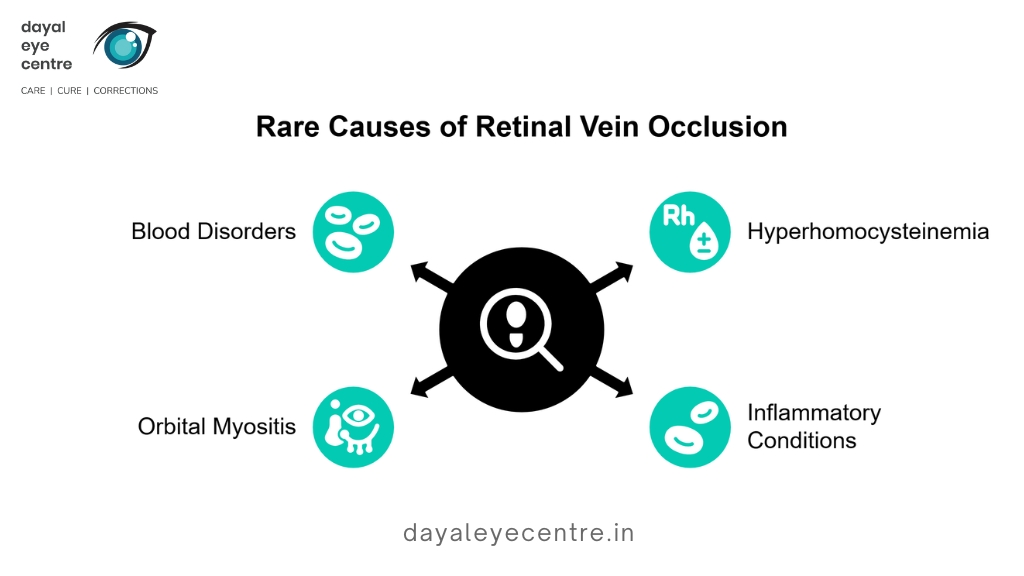
Retinal artery occlusion vs vein occlusion
Retinal artery occlusions are different from vein occlusions, though they might look similar. RAO happens because of emboli rather than local blood clots, making it a true “eye stroke” that needs immediate care. RAO doesn’t happen as often as RVO but causes more vision damage.
These conditions share risk factors like high blood pressure, diabetes, and atherosclerosis. RAO shows stronger links to heart-related clots, especially in patients with atrial fibrillation. Doctors need to check RAO patients for stroke risk right away, while RVO patients need tests for blood vessel problems.
How Doctors Diagnose RVO and Assess Damage
A precise diagnosis is crucial to manage retinal vein occlusion (RVO) effectively. Eye care specialists use specialized techniques to confirm RVO and review the extent of retinal damage.
Eye dilation and retinal examination
The diagnosis starts with a dilated fundus examination. Your doctor applies eye drops to widen your pupils and uses special instruments to examine the retina. Central retinal vein occlusion (CRVO) shows a characteristic “blood and thunder” appearance with extensive hemorrhages throughout all quadrants, cotton wool spots, and a swollen optic disk. Non-ischemic CRVO shows mild vein dilation and hemorrhages. Ischemic CRVO displays marked retinal edema and extensive hemorrhaging in all four quadrants. Branch retinal vein occlusion (BRVO) shows hemorrhages and edema only in the affected area.
OCT and OCTA imaging for macular thickness
Optical Coherence Tomography (OCT) is the life-blood of RVO assessment. This non-invasive scan creates detailed cross-sectional retinal images that measure macular thickness and identify fluid buildup. Doctors often base treatment decisions on OCT results because they provide objective, measurable data. An improved version, OCT Angiography (OCTA), shows retinal blood vessels without dye injection. OCTA measures vessel density and foveal avascular zone changes to help distinguish between ischemic and non-ischemic RVO.
Fluorescein angiography for vessel leakage
During fluorescein angiography, dye injected into an arm vein flows to retinal blood vessels and makes them visible during imaging. This test shows delayed vein filling, capillary nonperfusion, blood vessel leakage, and neovascularization. Retina specialists review these findings to assess ischemia severity and choose appropriate treatments.
Visual acuity and field tests
Visual acuity testing with standardized charts after refraction is part of functional vision assessment. Visual field examination finds scotomas (blind spots) and peripheral vision defects. These tests create a baseline vision measurement and track treatment effectiveness. Doctors might also check pupillary response, measure intraocular pressure, and run blood tests for underlying conditions, especially in younger patients with unusual symptoms.
Available Treatments and Long-Term Management
Doctors can’t directly unblock occluded veins in retinal vein occlusion, so they focus on treating complications. Treatment plans change based on how severe the condition is and what complications arise.
Anti-VEGF therapy and bispecific antibodies
Anti-VEGF injections are the best first treatment option for macular edema that happens after RVO. These drugs lower VEGF levels in your eye and reduce the swelling that causes vision loss. Doctors commonly use three main anti-VEGF agents:
- Bevacizumab (Avastin) – Works well even though it’s used off-label
- Ranibizumab (Lucentis) – FDA-approved and shows 16-18 letter improvement in visual acuity compared to 7.3 letters in control groups
- Aflibercept (Eylea) – Patients see an average improvement of 17.7 letters at 24 weeks versus -0.5 letters in sham treatments
You’ll likely need multiple injections over months or years, usually every 1-2 months at first. Faricimab (Vabysmo) got approved recently as the first bispecific antibody for eye conditions. This new drug targets both VEGF-A and angiopoietin-2 pathways at once. Clinical trials showed promising results – almost 60% of BRVO patients and 48% of CRVO patients could extend their treatment intervals to 3-4 months.
Steroid injections and their limitations
Doctors turn to steroid treatments when anti-VEGF injections don’t work well enough. The dexamethasone intravitreal implant (Ozurdex) works best two months after treatment, helping patients gain 10 letters on average. Triamcinolone acetonide injections also improve vision – a 4mg dose lasts 1-4 months, while 20mg doses can work for 6-9 months.
Steroids work well but come with serious drawbacks. About 35% of patients getting 4mg triamcinolone need medicine to lower their eye pressure, compared to just 8% in observation groups. These injections also increase cataract risk – 33% of patients in 4mg groups develop cataracts versus 18% in observation groups.
Laser photocoagulation and PRP
Laser treatments help with specific RVO complications. Doctors use grid laser photocoagulation mainly to treat macular edema in BRVO rather than CRVO. The Branch Vein Occlusion Study showed that grid laser treatment helps patients see better compared to no treatment.
Panretinal photocoagulation (PRP) specifically targets neovascularization complications. This treatment creates tiny burns in the peripheral retina that lower VEGF production. While PRP doesn’t directly improve vision, it’s a big deal as it means that the risk of neovascularization drops significantly.
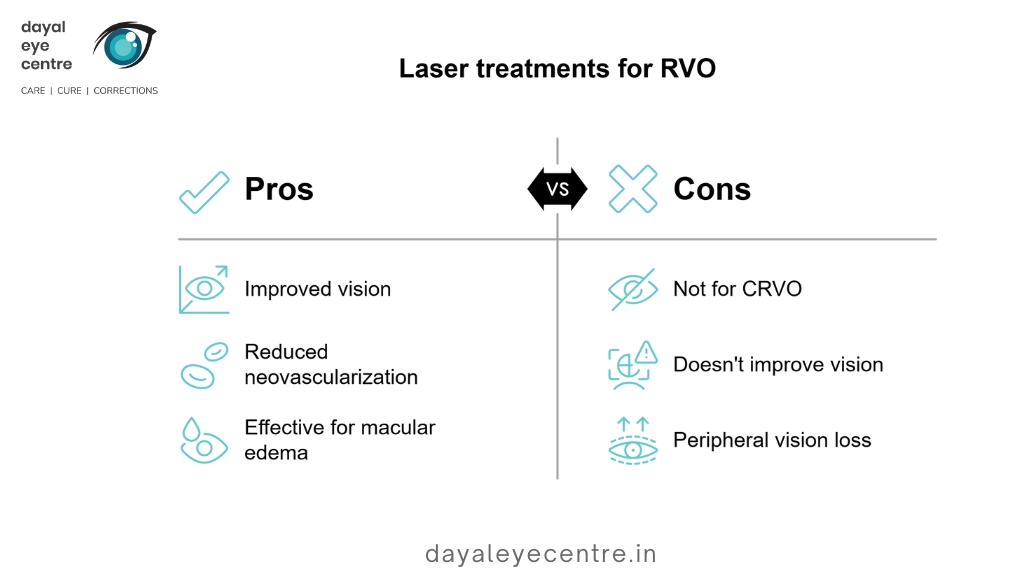
Vitrectomy for severe complications
Patients need surgery when they have ongoing vitreous hemorrhage, bleeding that keeps coming back for more than four weeks, or retinal detachment. During vitrectomy, surgeons remove the vitreous gel and fix retinal damage. They might also use laser treatment and replace the vitreous with saline, gas, or silicone oil. Research shows that carefully selected patients can maintain better vision long-term after vitrectomy.
Lifestyle changes and risk factor control
Everything in preventing RVO from coming back depends on managing underlying conditions. You can lower your risk by controlling high blood pressure, diabetes, and cholesterol. Regular check-ups, especially in the first few months, help doctors catch and treat complications early. A healthy lifestyle with regular exercise, quitting smoking, and maintaining a healthy weight helps manage the condition long-term.
Conclusion
Retinal vein occlusion poses a serious threat to vision without doubt if patients don’t get treatment quickly. This piece explores how blood flow disruption in the retina causes complications like macular edema and neovascularization that can permanently damage sight. BRVO patients usually have better outcomes than CRVO patients, but both conditions need immediate medical care.
Quick recognition of symptoms makes a huge difference. Sudden vision changes, floaters, or gaps in visual field should prompt immediate action. Eye care specialists use advanced diagnostic tools like OCT imaging, fluorescein angiography, and detailed eye examinations. These tests help them assess damage and create the right treatment plan.
Medical science hasn’t found a way to unblock the occluded vein directly yet. However, doctors can effectively manage complications now. Anti-VEGF injections, especially when you have newer bispecific antibodies like faricimab, help many patients see better. Steroid treatments serve as alternatives despite possible side effects. Laser procedures and vitrectomy surgery help tackle severe complications effectively.
Medical treatments work best alongside good health management. Patients need to partner with their healthcare providers to keep blood pressure in check, control diabetes, and maintain healthy cholesterol levels. Regular eye check-ups help doctors spot changes that need attention quickly.
Modern medicine’s progress in vision preservation brings hope to patients. Your sight depends on getting help fast when vision changes occur. RVO patients who receive proper care and stay committed to treatment often keep their functional vision and lead fulfilling lives despite this challenging condition.
FAQs
What are the most effective treatments for retinal vein occlusion?
The primary treatments include anti-VEGF injections to reduce macular edema, steroid injections, laser photocoagulation for certain complications, and in severe cases, vitrectomy surgery. Management also involves controlling underlying risk factors like high blood pressure and diabetes.
What are the main risk factors for developing retinal vein occlusion?
The primary risk factors include hypertension, high cholesterol, diabetes, and glaucoma. Age is also a significant factor, with the risk increasing for individuals over 50. Blood clotting disorders can play a role, especially in younger patients.
How quickly should I seek medical attention if I experience sudden vision changes?
You should seek immediate medical care if you experience sudden vision loss, substantial decrease in vision over hours or days, or new-onset floaters with vision changes. Even milder symptoms like subtle blurring should be evaluated by an ophthalmologist within days.
Can retinal vein occlusion resolve on its own without treatment?
While mild cases of retinal vein occlusion may improve without treatment, the majority of cases, especially severe ones, do not recover vision on their own and often worsen if left untreated. Early intervention is crucial for preserving vision.
How do doctors diagnose retinal vein occlusion?
Diagnosis typically involves a dilated eye examination, Optical Coherence Tomography (OCT) imaging to assess macular thickness, fluorescein angiography to evaluate blood vessel leakage, and visual acuity and field tests. These methods help confirm RVO and assess the extent of retinal damage.
